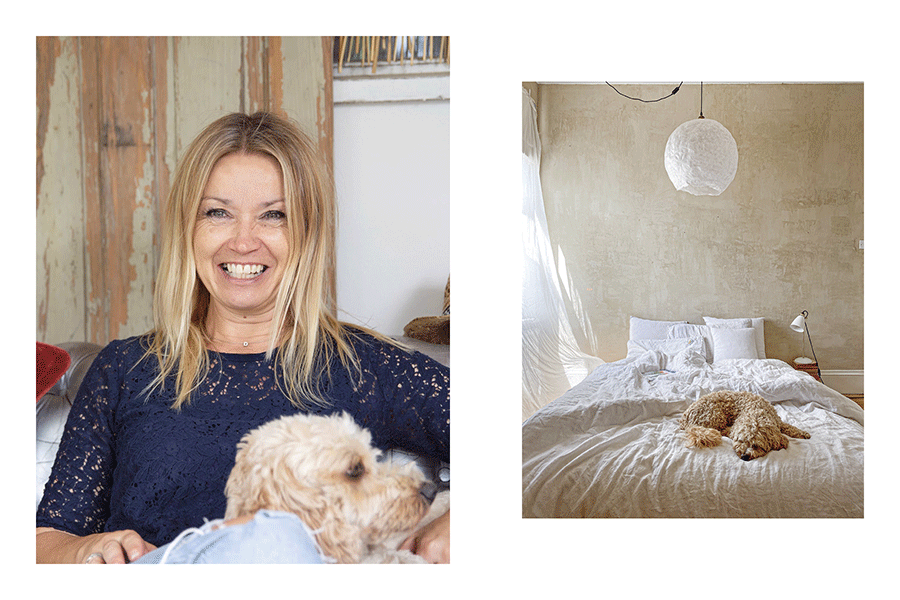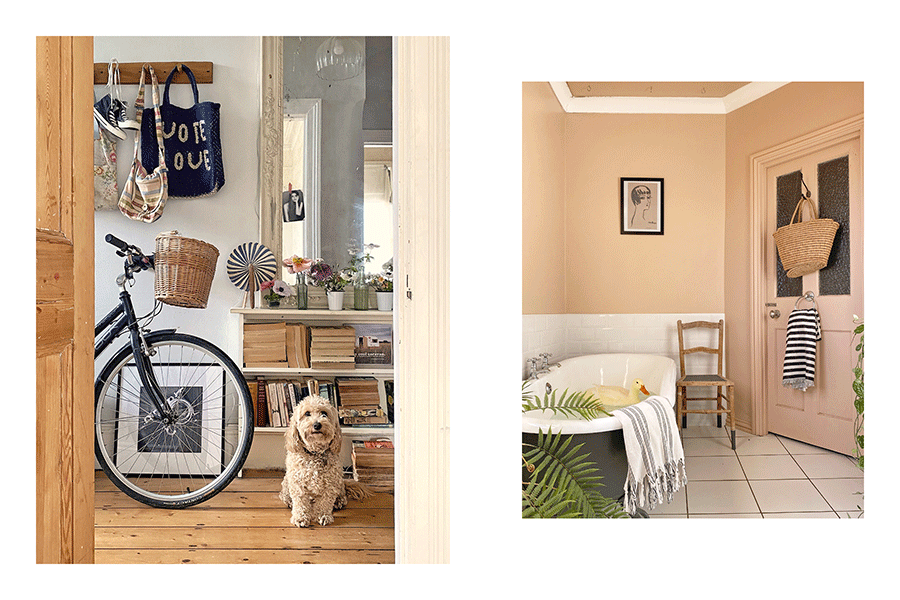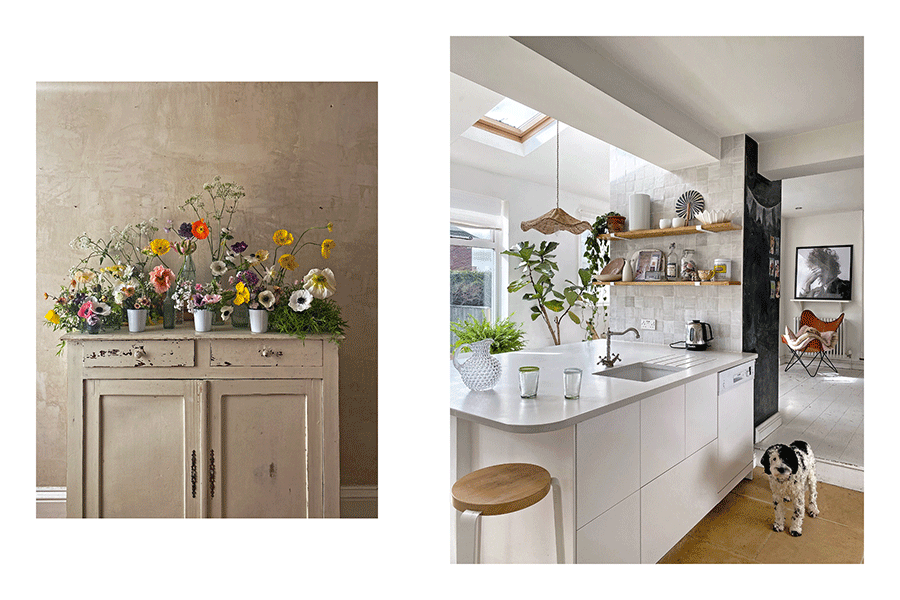This interior stylist’s Scandi-vintage aesthetic is calming, homely, and wholly covetable – just ask her 183,000 Instagram followers.
It takes a leap of imagination to see a property’s potential when it hasn’t been touched for decades. When Dee and her husband Rob moved into their four-bed Victorian villa, they embarked on a methodical refurb, going from room to room, replastering walls, stripping floors, and restoring original features such as ceiling roses and coving. “The house had last been decorated (badly!) in the 1980s,” Dee tells me. “Character is really important to me. I think the period features of any property, whatever its era, should be embraced and should take centre stage. I hate it when houses are modernised, and their original features erased. Those original features are part of the property’s story and should stay as part of the interior design of the house, even if it’s not currently trendy. Equally, I don’t think houses should be a shrine to the era they were built in either – there needs to be a careful balance between your taste and personality and what the house is already giving you.”

Dee says she always looks for a property with good bones, namely high ceilings, decent windows and – importantly – the potential to extend. With immediate decorative concerns put right, the pair began a structural refashioning at the back of the house. A nifty side return extension awarded them a lovely, light-filled open-plan family space that would eventually accommodate the full brood: children Anna, Imogen and Theo, and dogs Ted and Billy. “We felt that this gave the correct proportions to the house as, typically, Victorian townhouses start off grand at the front and get narrower and darker the further towards the back you go,” says Dee. “Extending sideways meant that the scale and proportions of the front of the house were echoed at the rear, and the space was also much more useful.”

In keeping with the light and airy feel of the extension itself, Dee’s newly made-over kitchen incorporates natural elements that successfully bring the outside in. “The kitchen opens up into the garden and the boundary between indoors and outdoors is blurred,” she explains. Indeed, the patio-like limestone flooring cleverly mirrors the slabs outdoors, drawing the eye seamlessly out and into the garden. Likewise, the open shelving crafted from reclaimed pine, lush houseplants, and textural elements in the form of rattan lampshades and jute rugs, offer nature-inspired calm. But all of this is offset with chic modernity: the Caesarstone quartz worktop is pleasingly sleek, while glossy white units are handle-free so as not to upset the kitchen’s clean contemporary lines. Bringing the rustic and ultra-modern touches together is a central column covered in zellige tiles that catch the light beautifully, thanks to their perfectly imperfect artisanal makeup.

Dee describes her interiors style as Scandi-vintage and this wonderfully homely aesthetic continues throughout the property. “I love the pared back, calming look of Scandinavian style with its emphasis on light and natural materials,” she says. “But I equally love the character and eco credentials of vintage furniture, especially French vintage furniture. I really enjoy making those two looks work together and getting the balance of colour, shape and texture right in my eyes. I love the juxtaposition of something new – clean lined and minimal – next to something old and gnarly with a story.”
The décor is calming, but not minimalist. Rather, the house is full of interesting, lived-in details: a collection of vintage bottles, hand-glazed ceramics, trays and cups bring organised chaos to the kitchen’s open shelving, while in the hallway, visitors are greeted with a stack of well-thumbed paperbacks in a low bookcase complete with recycled bottle vases and a giant shabby mirror on top. I wonder how Dee manages to achieve this balance between calm and charm. “I think your home should be your sanctuary,” she says. “A reflection of who you are and somewhere where you can feel exactly yourself. Ignore trends and friends, and tune into the colours, interior styles, shapes, patterns and textures that make you feel good,” she advises. “Use what your home is already giving you in terms of light, proportions and features as a backdrop, and layer your personal taste onto that. If you are a minimalist, for instance, then your layer will be light, and the form of your personal objects will be important. If you favour a Scandinavian look, then your palette will be light and natural, and your personal objects will be within a neutral palette.”

Dee’s list of go-to interiors brands is refreshingly broad with the more affordable Zara Home, La Redoute and H&M Home starring alongside Caravane, MeliMeli and Ochre. “For lighting, I often look to Original BTC, and I’ve just discovered Lights & Lamps for amazingly stylish lighting at good prices,” she says. With light so important, whether natural or artificial, Dee couldn’t live without her collection of French antique mirrors. “They’re huge and so they’re great at giving a room bigger proportions. Obviously, they reflect light so are good for me, a lover of the Scandi look and its emphasis on light. They’re also battered and foxed from 150-plus years of use and I adore the character that brings to the home.”

She may be all about the calm when it comes to her home, but Dee is as busy as ever work-wise: “I’ve just published a course on interior styling on Domestika called Interior Style: Design Personalised Spaces, and I’m currently working on a book about camper van style, which I couldn’t be more excited about. It’s all about how to create a sanctuary on wheels and translate your interior style into a camper van. It’s all the same rules as interior styling for a home but on a tiny scale, with the added benefit of a different outdoors view every day if you want!” There’s no doubt that Dee can work her interiors magic in any setting.